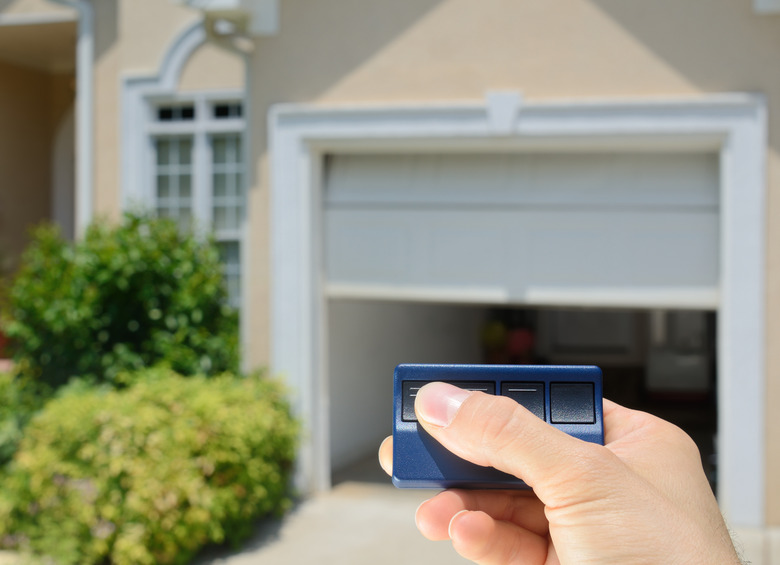How To Adjust A LiftMaster Door Down Limit
LiftMaster, which is now part of the Chamberlain Group, has been manufacturing automatic garage door openers since 1967 and has periodically introduced new functionality. That means the method you use for adjusting the door down limit function depends on the year and model of your door opener. The best resource for instructions on how to use your model is the owner's manual, and if you don't have a hard copy, you can find an electronic copy on the LiftMaster website.
Earlier LiftMaster door openers have adjustment screws that you can turn manually with a flat-head screwdriver, while later models have colored buttons (black and orange). Both are located on the back of the opener, so you need a ladder to access them.
Adjusting the Down Limit With Screws
Adjusting the Down Limit With Screws
You need to adjust the down limit when either of the following occurs:
- The door doesn't close all the way.
- The door fully closes but then reverses itself and opens.
When the door is closing, it should reverse if it makes contact with anything in its way. That's an important safety function that protects anyone in the path of the door, especially children and pets. Garage doors are extremely heavy and dangerous.
If your model has adjustment screws, you'll see two on the back of the housing, and they are clearly marked "up" and "down." If the door doesn't close all the way, measure the distance it still has to travel and then turn the "down" adjustment screw counterclockwise to lengthen the travel distance by the appropriate amount. One full turn equals 2 inches (5 centimeters) of travel distance. If the door reverses when it touches the ground, you only need to lengthen the distance by a small amount — a half turn may do it.
Adjusting the Down Limit With Buttons
Certain models, particularly the 2500 series, have adjustment buttons, so you don't need a screwdriver to adjust the down limit. It's usually best to adjust the up position before you adjust the down position, but you can set either position independently of the other.
1. Set the Up Position
Press and hold the black button until the LED starts flashing and then release it. Press the black button again and hold it until the door reaches the desired up position and then release the button and the door will stop.
2. Adjust the Up Position
Toggle between the black and orange buttons to fine-tune the up position. Black makes the door go up, and orange makes it go down.
3. Lock In the Up Position
Press the button on the wall or remote control to make the door close and press it again as soon as it starts moving. This locks in the up position.
4. Set the Down Position
Push and hold the orange button until the door reaches the desired down position. You want the door to go down all the way, but you don't want it to go too far because that puts pressure on the door.
5. Fine-Tune the Down Position
Toggle the door up and down using the black and orange buttons until it's in the right place.
6. Lock In the Down Position
Use the wall or remote button to open the door. This locks in the down limit.
